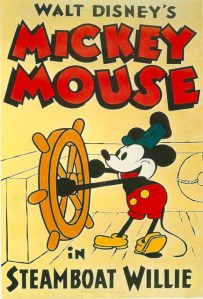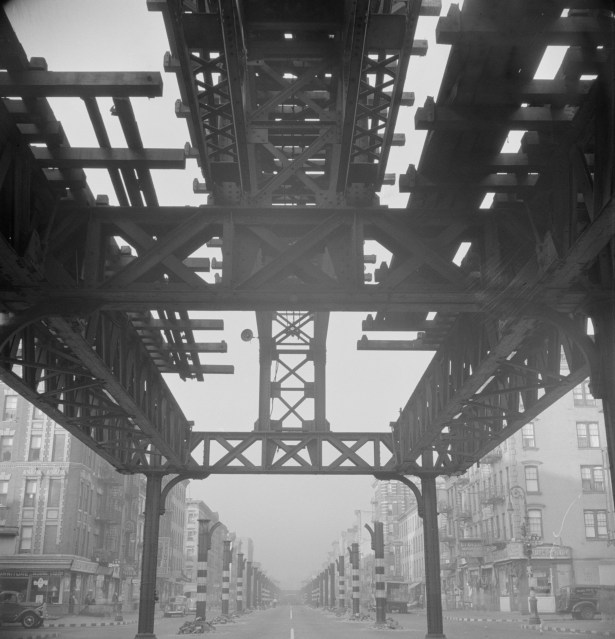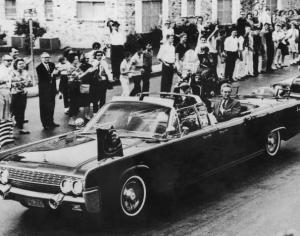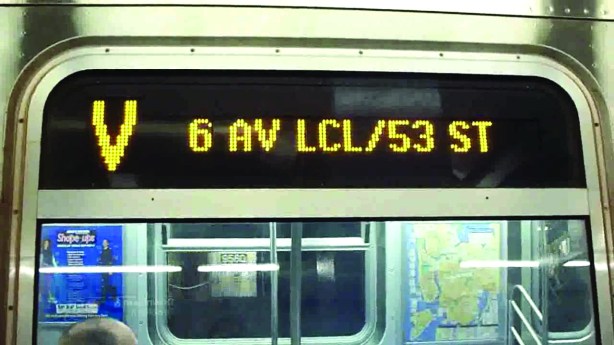It Took a Very, Very Long Time for the Second Avenue Subway to Be a Reality
By Terence Cullen January 4, 2017 4:30 pm
reprints
For the first time since World War II, a train went north of East 59th Street and east of Lexington Avenue last Sunday.
That’s right, the long-awaited, highly doubted and much-scrutinized Second Avenue subway is actually here.
For a little context, this was a proposal pitched in 1920—when Al Capone was still a thug from Brooklyn terrorizing the streets of Chicago, George V was the Emperor of India, and literacy tests were in force throughout the south.
Since the proposition 97 years ago, the Chicago Cubs have won a World Series and a man has walked on the moon. Fifteen governors and another 15 mayors have come and gone over that time.
For those of you not familiar with the history of the city, this was as much part of New York City myth as the sewer alligators and the Z train. Residents rolled their eyes as if to say, “Yeah, that’ll get built,” much like they did for the original World Trade Center in the 1970s or, more recently, the extension of the 7 train to Hudson Yards.
But the state’s Metropolitan Transportation Authority spent a decade chugging along on the 33-block, $4.45 billion phase one of the multi-phase Second Avenue subway line, which will one day run from East 125th Street to Hanover Square. For now, however, the Q train will service the new line from East 63rd to East 96th Streets (but the Q starts in Coney Island).
Gov. Andrew Cuomo, who in the waning days of construction personally oversaw the line’s completion (going to the site daily), declared it a game-changer for the city.
“The on-time completion of this major, transformative project reaffirms confidence in government competence, increasing capacity on the nation’s busiest subway system, and delivering a new, vital transportation artery to millions of New Yorkers,” he said in a Dec. 19 statement.
But can one really consider New Year’s Day 2017 as the true deadline? It took five groundbreakings before the final incarnation of the project stuck and the first few days of service were only during the daytime. Indeed, many efforts were made over 97 years to make the Second Avenue subway a reality. A lot of things also happened in the world during that time. Presidents were elected and assassinated; the Cold War started and ended; other subway stations on the West Side were constructed and opened.
We dug deep (yes, pun intended) into one of the lengthiest construction projects in the city’s history, pulling from news clips and historical information that the MTA has made available. Along with the key moments in this slow-rolling infrastructure project are several historical events that took place, just so you can see how much the world has changed since that first proposal.
1920: Daniel Turner, an engineer with the state Public Service Commission, floats the first proposal for a below-ground train running along Second Avenue. The line would be part of a city owned Independent Subway System and would replace the elevated train that had been in place since the late 19th century. A revised plan two years later puts the cost at $165 million, according to a documentary on PBS.
1928: Mickey Mouse makes his screen debut in Steamboat Willie.
1929: An ambitious transit network project is rolled out in September with an $800 million price tag. A big part of that is the Second Avenue subway, which was slated to cover Manhattan and go into the Bronx. The Manhattan portion, running from the Harlem River to Houston Street, is expected to cost $86 million, according to the MTA.
The stock market crashes on Oct. 29, causing chaos and economic uncertainty. Although recovery efforts eventually lead to massive infrastructure projects in New York City, the Second Avenue subway is not among them.
1930: Various proposals are floated throughout the decade on when and where Second Avenue subway construction will begin. Target openings range from 1940 to 1948. By 1939, the estimated cost has risen to $249 million. But the new subway line is again shelved by the outbreak
of World War II.
1932: Prohibition is repealed.
1940: The Interborough Rapid Transit Company, a privately held rail business that controlled eight lines in the city, is wholly acquired by the City of New York. Service on the elevated Second Avenue line shutters north of East 59th Street and is completely ended two years later. The steel support for the rails comes down and opens Second Avenue to sunlight for the first time in decades.

1945: The Enola Gay drops an atomic bomb on the Japanese city of Hiroshima on Aug. 6. Less than a month later, the Empire of Japan offers its unconditional surrender on the deck of the U.S.S. Missouri, marking the end of World War II.
1951: Roughly $500 million in bonds are released by the city to fund construction of the Second Avenue subway. City officials anticipate work will begin on the line by 1957 or 1958.
But by the late 1950s most of that money has been used for renovations to existing lines, leaving little to build the subway. The plan is put to the side again.
1955: The elevated Third Avenue line—originally running from the Bronx to South Ferry—is shut down and dismantled. Train service in Manhattan east of Lexington Avenue officially ends.

1963: President John F. Kennedy is assassinated in Dallas.
1964: The People’s Republic of China tests its first nuclear weapon at Lop Nur.
1965: The Metropolitan Commuter Transportation Authority, the precursor to the MTA, is officially formed by the state legislature. Initially intended to save the then-bankrupt Long Island Railroad, the state entity assumes full control of the subway system in 1968.
1969: Man walks on the moon.
1971: The Twin Towers are completed in Lower Manhattan.
1972/73: A ceremonial groundbreaking at Second Avenue and East 103rd Street featuring Mayor John Lindsay and Gov. Nelson Rockefeller takes place. The goal at the time is to build the Second Avenue subway, expected to cost $1 billion, in sections using different contractors, according to a 2007 story in The New York Times. A year later, Lindsay breaks ground at Canal Street in Chinatown on another section of the tunnel, which spans East 110th to East 120th Streets. At this point the price tag has crept up to $1.3 billion. Officials hope the subway line will be in full service by 2000, New York magazine reports at the time.
1975: “Ford to City: Drop Dead” appears on the cover of the New York Daily News as the fiscal crisis hits its peak and puts the city on the edge of bankruptcy. The federal government decides not to bail Gotham out, leaving it up to the state to restructure the city’s economy.
Mayor Abraham Beame is forced to put the Second Avenue subway and its ambitious budget on hold, the Times reports in 2007. The three tunnels that have been completed are sealed.
1979: The Iran hostage crisis begins, lasting 444 days.
1980: J.R. Ewing shot on the season finale of Dallas.
1985: New Coke is introduced to the public. Pepsi sales jump.
1989: The Berlin Wall comes down.
1999: A $5 million study by the MTA, which took two years to conduct, proposes that the first leg of the Second Avenue subway be built from East 63rd to East 96th Streets. State elected officials are concerned about the cost and impact of the potential work. Mayor Rudolph Giuliani indicates he would prioritize an extension of the 7 train to the Far West Side, the Times writes at the time. Officials indicate it would cost $400 million and take three years to study the feasibility of the Second Avenue subway before work could begin.
2001: The Twin Towers are destroyed on Sept. 11, killing nearly 2,700 people in New York and shutting down activity in Lower Manhattan.
Michael Michael Bloomberg is elected mayor in November, winning the first of three consecutive terms.
Service on the V train begins in December, running from Second Avenue on the Lower East Side to Forest Hills, Queens.

2004: Assembly Speaker Sheldon Silver, who represents a swath of the Lower East Side, indicates he will back the Second Avenue subway project—something necessary for planning to move forward—although his district won’t be serviced until later phases.
2007: Gov. Eliot Spitzer breaks ground on phase one of the project. Estimated at the time to initially cost $3.8 billion, the Second Avenue subway is slated to finish in 2013. This is the fifth ground breaking in 87 years of planning the line. The first signs of a recession begin to appear, setting off a catastrophic financial collapse in 2008.
2009: Work continues on the project despite the worst economic crisis since the Great Depression. MTA officials push the completion deadline back two years to 2017. At the same time, the Second Avenue subway budget balloons to $4.4 billion, according to New York magazine.
2010: The MTA ends service on the V and W trains.
2012: Superstorm Sandy hits the East Coast, killing 233 people and causing more than $70 billion worth of damage.
2015: The Hudson Yards extension of the 7 train opens in September.
2016: In November, service to the W train returns.
Cuomo commits that the Second Avenue subway will begin servicing riders on Jan. 1, 2017. As of December, the MTA indicates it has stayed on track to its $4.45 billion budget.
2017: The Second Avenue subway offically begins service.


